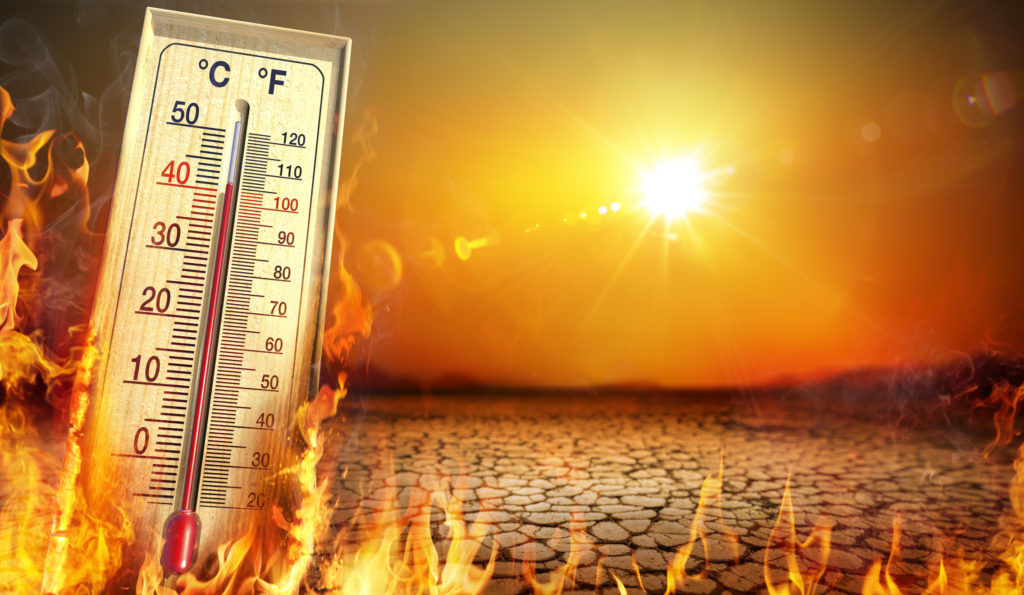Opinion: It’s Hot! Extreme Heat, Race, Recommendations, And Hope

Photo: Romolo Tavani. istock
Love Justice And Climate Change

In a hospital bed in Jacobabad, Pakistan, Mohammed Musa was suffering from heat stroke. The 65-year old rice-farm worker had been brought in with a 102°F temperature, body aches, and exhaustion. Temperatures in Jacobabad reached over 100° for 51 straight days and hit 123.8° one day earlier this year. Above Musa’s bed was a banner detailing how to avoid heat strokes. “Stay indoors or under a shade during the hot hours of the day,” it advised. It’s an excellent recommendation, but not currently realistic for countless farm workers in many parts of the world. “If we stop working every time it gets too hot,” Musa said, “how will we eat?”
Musa recovered from his heat stroke, but in Portugal, Spain, Germany, and Britain, over 4,600 people, many of them elderly, died in a heat wave in June and July this year. Temperatures in Europe went over 104°F–more than 20 degrees higher than usual summer peak temperatures — impacting millions.
Danger Zone
In the U.S. NOAA (the National Oceanic and Atmospheric Administration) categorizes a “heat index” reading of over 103°F as in the “Danger” zone. The “heat index” takes humidity as well as temperature into account in order to measure how hot it feels. Heat index readings of 90° – 103° are in the “Extreme Caution” zone. This week the heat index in 40 major cities in the U.S. is expected to reach the Danger zone, with large areas of the country in the Extreme Caution zone.
In mid-August temperatures in several parts of California hit 110°F. Last year, the heat wave in the Northwest U.S. resulted in over 600 additional deaths in just one week in Oregon and Washington State. A farmworker, Sebastian Francisco Perez, for example, was found dead from heat stroke between rows of trees in the nursery where he had been moving irrigation lines. Overall, extreme heat, kills more people in the U.S. than any other type of weather event.
Heat Amplifies Racial Inequality
The harmful effects of climate change often fall disproportionally on people of the global majority and indigenous people (PGMI) ( also referred to as “people of color”). Extreme heat is no different. Within urban areas, where 80% of the U.S. population now lives, some neighborhoods experience more severe heat than others. Areas with fewer trees, more heat-trapping pavement, and greater density of buildings experience amplified heat levels. Within most cities these are neighborhoods where many PGMI live.
A recent study used satellite-derived data about surface heat in U.S. urban areas and combined it with census data about race and socioeconomic status. Differences in the concentration of heat were more correlated with race than with income, and showed Black urban residents experiencing twice the urban heat intensity of White residents. Neighborhoods that were redlined (deemed ineligible for federal housing loans because the residents were predominately Black) in the mid-twentieth century, are today more crowded, populated by PGMI, and experiencing greater heat in the summer.
Why Such Extreme Heat?
Why is it that we are seeing such extreme high temperatures while average global temperatures have risen less than 2.7°F? The short answer is that modest increases in global temperature have destabilized once stable air and ocean currents, leading to much greater swings in temperature and rainfall and more intense weather events, seemingly everywhere. Scientists say that as a result of climate change, the Arctic is warming 3 or 4 times as fast as the rest of the planet. This has destabilized the North Atlantic jet stream, for example, which has led to more extreme weather in the U.S., including heat waves. At the same time ocean temperatures are rising as well. Prevailing winds move air heated by the oceans to inhabited land areas, further contributing to heat waves.
What Can We Do?
What can we do about extreme heat? First, we must mitigate the causes by immediately making dramatic reductions in the burning of fossil fuels, and eliminate those emissions entirely as soon as possible. We must preserve and expand forests and widely adopt regenerative agricultural methods that capture carbon. We must plant trees in urban areas, starting with neighborhoods inhabited by PGMI. Then we can help people deal with heat by establishing cooling centers, implementing heat-safety standards for construction and agricultural workers, and subsidizing electric heat pumps (which cool homes efficiently) for low income families. There’s more that can be done, but these steps are an excellent beginning.
Good News
Facing the reality of the effects of climate change is often difficult and painful. (It certainly is for me!), But, I think it’s important for us to understand the realities that confront human beings today. We only have a full picture, though, if we also put attention on positive developments. So I will include here a few items of good news (both for our benefit and for us to share with others).
The big climate bill that Congress passed and President Biden signed this month (called the Inflation Reduction Act) is expected to reduce U.S. greenhouse gas emissions roughly 40% from 2005 levels by 2030.
Also included in that bill is a little noted, but very significant provision that essentially overturns a recent Supreme Court decision that limited the EPA’s ability to regulate emissions. The bill amends the old Clean Air Act to explicitly define greenhouse gas emissions (including carbon dioxide, hydrofluorocarbons, and methane) as air pollution, and therefore subject to regulation by the EPA.
Fast Company’s “World Changing Ideas Award” for consumer products 2022 was won by a company called Gradient, for an electric heat pump that hangs from the window sill, can be installed with hand tools, and plugs into a wall outlet. (See image below.) It provides cooling and heating at a fraction of the cost of traditional units and is climate friendly. New York officials just announced that the city and state will spend $70 million to deploy 30,000 of these units in city-owned apartments. It’s a major step toward de-carbonizing public housing in the city.

Russ Vernon-Jones was principal of Fort River School 1990-2008 and is currently a member of the Steering Committee of Climate Action Now-Western Massachusetts. He blogs regularly on climate justice at www.russvernonjones.org.
